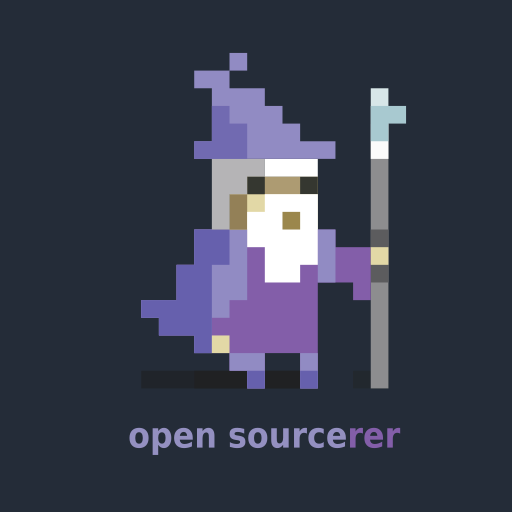Hello everyone, my company (our department is of around 150+ developers/machine learning people/researchers) is currently considering switching from Windows to Gnu+Linux for company devices (as in the machines we use in our daily work) and we are currently in the phase of collecting requirements. I’m not in charge of the process or involved in the decision phase, but as an enthusiast I’m curious about it. We handle data and other sensitive resources, so the environment should remain managed by the IT department (what’s possible to install, VPNs, firewalls, updates and similar). What do companies generally use in this kind of scenario? I’m assuming they generally do some stuff with either Canonical or Red Hat, but are there alternatives? Are there ways to do something that works across distributions by using flatpak or the nix package manager? What are your experiences?
OpenSUSE can also be considered.
OpenSUSE supports the Kiwi build system so you can have organization managed images and variants of OpenSUSE!
YaST has so many awesome funktions
Btw if Enterprise support is needed SLE Desktop is probably better than OpenSUSE
Putting on my enterprise hat, most companies are going to want some form of paid support. Canonical and Suse are probably the two trustworthy players in that space (from an enterprise perspective, I really don’t trust Canonical) now that RedHat has developed some form of paranoia. If it were up to me I’d push for SUSE. I think Nix is super great and fantastic but I’m a DevOps engineer, not a support desk engineer, so I view deployments and support differently than someone who has to answer questions about how to open email
In terms of ease of management and deployment NixOS might be an interesting option. It can be completely configured through a single file so the deployment and update processes become very straightforward and easy to manage in a centralised fashion.
I was thinking about that myself, but is there a way to remotely update configuration.nix and rebuild, if the requirements change? For example, if some dev wants to use Geany instead of Vscode and Admin is like “Yeah, why not”, how would that be implemented?
Ssh or ansible lol
Sure. Pick any orchestration solution you like. Ansible, for example. You’d just change the file that is rolled out for that machine, either by changing some central, per-machine file or its ansible file, then tell ansible to update the file remotely and make it run
nixos-rebuild switchon that machine. A few seconds later the tool is installed. If you replaced vscode with geany vscode would be uninstalled, too.IIRC you can apply a confog built locally on a remote host, of you have SSH keys set up
I would consider a git repo of a few standard configurations and switch them to a config that had it, or possibly maintain individual configs per user. Your orchestration would need to reference the git repo so when you need to add software XYZ to everyone’s machine you don’t have to re-run all of the individual playbooks and deal with the hassle of remembering who needed which playbook ran.
There are numerous ways to approach this.
Canonical:
- Cheap finance-wise
- Low upfront cost skill-wise
- Medium ongoing cost skill-wise
- Occasionally breaks without being touched
RedHat:
- Medium cost finance-wise
- Low upfront cost skill-wise
- Medium ongoing cost skill-wise
- RedHat is not what it used to be. Has QA been sacked?
And, of course, my favourite 😁
Gentoo:
- Cheap finance-wise
- High upfront cost skill-wise
- Medium ongoing cost skill-wise
- Only breaks when multiple warnings are ignored
From my experience, though - you’ll probably end up on Ubuntu. Because everyone knows it, right?
Yep, Ubuntu was mentioned as an example in a few meetings and I think they will end up doing that. And it’s fine, give me literally anything other than Windows and I will be happy, however I’m a spoiled kid, so I also don’t really want Ubuntu.
The disappointing thing about Ubuntu is that the Ubuntu in everyone’s minds is very different from Ubuntu that’s actually getting installed. Snap is atrocious on desktop. Random inconsistencies across a fleet on a few hundred identical desktops. A dodgy campaign to onboard everyone onto Ubuntu Pro (I don’t mind them charging for a service, but the way they do it is disgusting.). Incredibly inflexible if you want more than just the barebones desktop.
Every day there’s something annoying popping up.
“I’ve heard of that, let’s use it!”
Please please please tell your bosses how stupid that attitude is.
What about SUSE?
I never could forgive them the microsoft deal
so the environment should remain managed by the IT department
For the domain you are describing
developers, machine learning people, researchers, Linux
having personal machines maintained by “IT” is not a typical setup. A ML engineer is more IT savy than your average IT department, especially on Linux when they use Linux for work.
An alternative to a centrally mentioned solution can be a reasonable set of rules with allows more freedom for the individual. For example, you could provide every new-joiner with a pre-configured laptop, but they can take over ‘root’ privileges if they want. It’s not so hard to keep a Linux machine secure if the users doesn’t intentionally screw it up. You don’t need IT to run updates, it happens automatically. You don’t need a personal firewall, they are no open ports per default anyway.
IT may want to install an agent that helps detecting security breaches (or misconduct). Or remote-support. Of course, you may require VPN. You may require that sensitive data does not leave the server. You should. A personal device is an attack vector and Linux has security holes all the time, but remote exploits are nowhere as common as in a Windows, Outlook, AD world.
The upside of allowing users to tinker with their machines is that IT only needs to provide a reasonable starting point, not a perfect solution for everyone. If you expect support from IT, you will want to standardize the distribution and maybe some applications or tools, but you don’t need everyone in the company to be on the same version of Solitaire.
We’re running Linux on the vast majority of PCs at my job. We used to run Lubuntu, but switched to Debian. You can use pam_mount so user folders are mounted from a server at login, to create a “roaming profiles” environment. But there really isn’t a great solution for laptop users that might be away from the office.
If you do use pam_mount, don’t mount their entire home folder. That will end up throwing a bunch of stuff on the server, like chrome temporary internet files, and their .config folder, that just aren’t needed on the server and will slow everything down. Just mount their individual Documents, Downloads, Pictures, Videos, Desktop, etc. folders.
We’re a small business, we don’t have any Enterprise Support or anything like that.
Just mount their individual Documents, Downloads, Pictures, Videos, Desktop, etc. folders.
You could use Seafile (custom server and client) or something like NextCloud (actually just WebDav server and client) to sync those folders. Works perfectly on laptops and if you sync, you don’t need a good network all the time. (And since the laptop is a personal devices, you only sync 1 user or maaaybe a small number)
Have you considered git for the roaming profile files/settings?
I’d recommend openSUSE here. If Enterprise support is needed (which I am sure is true) than SLE Desktop will work out better.
If you aren’t letting people install packages and customize the environment, you don’t need Linux for desktops. Give them a locked down Mac, instead. You can do it on Linux, but it defeats the purpose. You’re devs would hate it.
You’re thinking as if it was Windows. In enterprise environments, companies control a set of proxy repositories and whitelist/blacklist packages.
If you’re a dev and need a specific package (or set of packages) that aren’t listed, then you can request it through a ticket.What do companies gain from a full Linux environment?
- Better integration with services (if it’s already a linux/unix shop).
- Cost reduction from licenses (although an increase in training/in-house expertise costs)
- Machines will run supported as long as the silicon stays welded.
- Better security if implemented right.
(A big issue of Windows is that for running secure you need to cut a lot of it, which generates shadow IT).
However if not done right, there’s a long list of head-aches, including some software that’s no longer compatible and has no real professional linux option (design suites, SCADA/ICS, CAD software, etc).
Even if there’s a similar tool, it’s highly possible that there are trade-offs that will require a lot of investment.In most cases this gets solved in two ways:
- Designers get a Mac so they can stop whinning and IT churns a solution to integrate all the outdated stuff running on that OS with the rest of enterprise services.
- Windows stuff that doesn’t require a beffy computer gets deployed on a VM with RBAC integrated with the company’s IDP.
In enterprise environments, companies control a set of proxy repositories and whitelist/blacklist packages. If you’re a dev and need a specific package (or set of packages) that aren’t listed, then you can request it through a ticket.
That’s fine for Windows desktops, Mac desktops, and Linux servers… but the advantage of a Linux Desktop is allowing a dev to customize the desktop and packages to what is most efficient for their use. Sure, you can do this to a Linux Desktop, but who would want to work on that? If you take that advantage away from a Linux desktop user, they would benefit more from software compatibility that comes with Windows or Mac. A locked down Linux Desktop has the same problems of limiting the dev from customizing it to match their most productive workflow, combined with no native MS Office apps, no Adobe apps, and more. That’s a double whammy to your user.
In our case we need Linux because the software we use only run there or is better integrated. Infact we use WSL for the core activities, bit WSL is crap.








